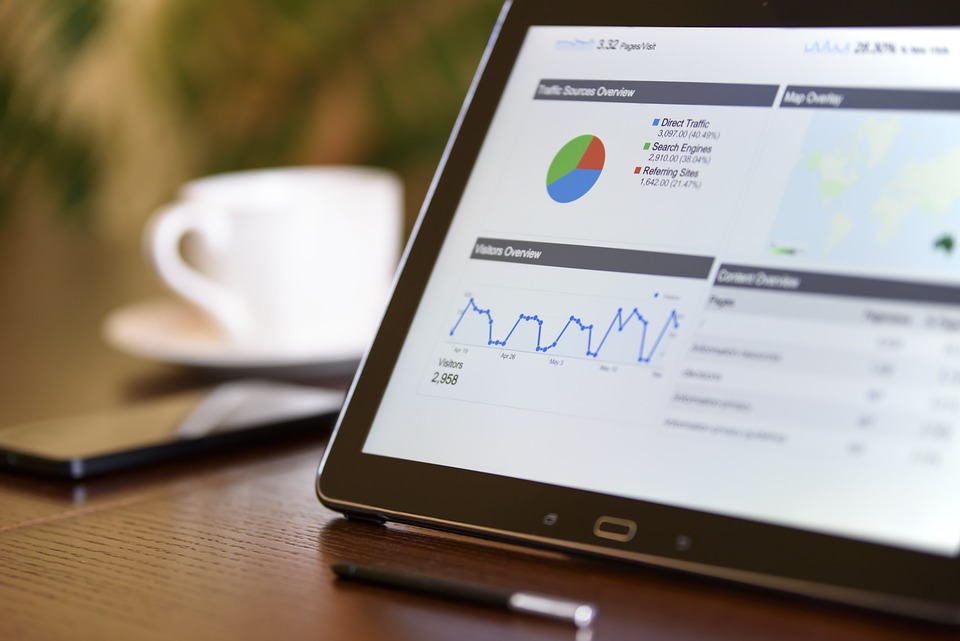10 CPG Trends and How Market Research Has Responded to Them
Kyle Byers of Exploding Topics has written recently about nine key trends in the CPG industry. We’d like to focus on those nine trends below, add one of our own, and talk about how market research has responded to these trends.
From food and drinks to apparel and cosmetics, consumer packaged goods (CPG) are a vital part of everyday life for most consumers and households. Since these products are mostly disposable, there is a regular need and consistent demand for replenishment or replacement, forming the basis for a competitive environment for all brands.
The CPG market has significantly and steadily grown despite the competition and even more so with the COVID-19 pandemic. It was valued at $2.06 trillion in 2021 and with a compound annual growth rate (CAGR) of 3.5%, it is estimated to reach $2.8 trillion by 2030.
In addition to the pandemic, new technologies and consumption habits have contributed to the rapidly changing face of the CPG industry. From direct to consumer (DTC) to sustainability to product personalization, we’ll take a closer look at 10 of the most important trends impacting the CPG industry right now.
1. Legacy CPG Companies Join DTC
DTC online sales growth in 2022 is estimated at $138.03 billion, so you can understand why CPG industry stalwarts couldn’t ignore the DTC wave any longer, joining the trend three ways. First by acquiring competitors, like Unilever who counts Dollar Shave Club, Schmidt’s Naturals and UK-based Graze among its many DTC acquisitions since 2015. Second, they are launching entirely new brands, like Procter & Gamble’s EC30 which is an eco-oriented brand of dissolvable, solid-form soaps and cleaning products. And thirdly, by launching DTC sites like PepsiCo’s PantryShop.com and Snacks.com. These sites went up during the Coronavirus pandemic and PepsiCo nearly doubled their DTC sales in Q3 2020.
2. CPG Startups Emerge to Make Their Mark
Without a middleman and the need for retail shelf space, the DTC business model fosters competition. Many DTC startups use a subscription model to generate steady and recurring revenue, allowing them to take a bite out of the market at the expense of traditional CPG brands. For example, Gillette saw its 70% share of the US razor market go down under 50% within a decade due to competition from Dollar Shave Club and Harrys.
3. More Retailers Launch Private Label Brands
Availability issues during the pandemic have partly contributed to the popularity of private-label products. With 65% of shoppers saying they’ll switch brands if prices are too high, being an affordable alternative also helps private-label brands gain ground in the market. Think Amazon’s private-label clothing brand Goodthreads, which is competing against big brands H&M, Levi’s, and Uniqlo. Better margins and direct control over product development have also convinced retailers like Walmart and Kroger to launch their own consumer brands.
4. Faster and Easier Delivery Than Ever Before
With the pandemic pushing e-commerce into overdrive, access to faster and easier delivery options is becoming a key point in purchasing decisions, according to 68% of shoppers in a recent survey. 85% of online shoppers say they will search for someplace else if the delivery time is too long, while 30% of consumers expect same-day delivery. This need for speed has given rise to dedicated fast-delivery CPG retailers like GoPuff who are offering to deliver not in days or even hours but in minutes.
5. Focus on The Omni-Channel CPG Shopping Experience
More and more CPG brands and retailers are pushing for omni-channel shopping, allowing a smooth and seamless purchasing experience across different devices, or even between in-store and online. To illustrate: Sephora enhanced in-store experience by letting customers access their online shopping lists called “Loves” on large screens inside stores with the help of in-store tablets. Compared to single-channel brands, CPG companies that utilize at least three retail channels have shown a 287% higher purchase rate.
6. Expanded Omni-Channel SPG Marketing
CPG companies are also leveling up their marketing with a more omni-channel approach. TV ads, product placements, PR, and digital marketing methods like PPC ads, which have proven their effectiveness time and time again, are now joined by the new kid on the block: influencer marketing. Even with as few as 1,000 social media followers, “micro” and “nano” influencers are able to deliver results for CPG brands tapping into these smaller, more focused niche experts.
7. Sustainability and Clear Brand Values Are More Important Than Ever
Another thing that the pandemic accelerated is the rise of green consumerism. Many consumers, mainly Gen Z, now avoid brands that don’t align with their stance on the environment and other sustainability issues. 53% of Internet users have expressed intentions to switch products or services if a company violates their personal values or they weren’t sustainability-focused.
8. Self-Care Product Demand Is Rising
The pandemic also brought to the fore holistic self-care, where consumers use multiple products to optimize their health and wellness. Skincare products are now outselling makeup, thanks to millennials who spend more on self-care than any previous generation, and CPG brands like CeraVe and DRMTLGY who have jumped at this opportunity.
Products containing cannabidiol, also known as CBD, were not legal nationwide in the US until 2018. Now, CBD products are a rapidly growing part of the self-care category, with sales at $4.6 billion in 2020 and expected growth of over $16 billion in 2026.
9. Growing Popularity of Product Personalization
Offering a personalized experience through product quizzes can boost e-commerce conversion rates while building direct, one-to-one relationships with customers. This was the goal behind beauty brand Tatcha offering personalization via its Ritual Finder tool.
In fact, 71% of consumers expect personalized interactions according to McKinsey. Conversely, 76% get frustrated when they don’t get them. 60% of consumers say they’ll become repeat customers after a personalized shopping experience.
10. Gen Z Is Becoming a Major Part Of The Consumer Market
We’ve hinted this earlier, but this trend is just as impactful as the others, especially with the $143 billion of spending power that allows Gen Z to make up 40% of the entire global consumer market. With the shift to digital commerce, companies need to find creative and effective ways to tap into this massive demographic group and understand their buying patterns, especially with regard to social media. Did you know that 97% of Gen Z purchasing decisions are heavily influenced by social media, with 48% of consumers now likely to purchase directly from TikTok?
How Market Research Has Responded to These Trends
Based on these trends, we can assume the CPG market is moving into a personalized and multi-channel direction where leading brands are recognized not only for their competitive price points but also for their value propositions. There are four key ways in which the Market Research industry has responded to these trends and provided newer and more incisive tools for understanding consumer behavior.
1. The Shift from Perceptual Research to Transactional Research
Pandemic restrictions have long been lifted and brick-and-mortar locations have reopened, but there’s no denying that consumers have embraced e-commerce and the convenience it offers. Consumers will still appreciate the opportunity to test products in person with in-store shopping, but when there isn’t such a necessity, e-commerce becomes the go-to sales channel. This is especially true for those who have already established loyalty to a particular brand. Following this trend, there’s been a seismic shift away from perceptual research dealing with the in-store experience to customer research dealing mainly with degree of satisfaction at certain touchpoints in the e-commerce funnel.
Brand and Insights Managers increasingly seek hard metrics to support specific e-commerce initiatives, including product depictions on small and large screens, comparative text descriptions, active displays involving motion, sound, and animation, features such as reviews, promotion codes, side-by-side comparisons, visual try-it-on-yourself options, and options for shipping, group discounts, buy-now-pay-later offers, and repeat-purchase and subscription-purchase offers. While perceptual research can guide them in a general way, the degree-of-satisfaction metrics at these touchpoints in the shopping experience deliver more hard value to the decision maker who is tasked with determining the effectiveness of e-commerce marketing methods.
2. From Qualitative to Quantitative Methodologies
Another development is the shift away from common qualitative methodologies to quantitative methodologies. For example, years ago there was much more exploration of the spatial shopping experience via in-person focus groups, shop-alongs, visual diaries, ethnographies, and the like. A good deal of that has transitioned to quantitative research using direct metrics such as scalar degree-of-satisfaction measures delivered via web and text.
Fundamentally, the need-to-know among contemporary Brand Managers and Insights Managers is not so much “how does my brand’s expression attract consumers?” as it is “how satisfied are consumers with their experiences with my brand?” The first concern was well served by a variety of qualitative methodologies. While it’s still an active concern, it has declined somewhat, while the second concern has become white-hot. Quantitative methodologies on the whole do a better job of serving this second concern than qualitative methodologies do, especially given that brand “experiences” in the current day are less spatial and more virtual. This makes it easier to ask a consumer a transactional question such as “how did it go for you?” while the consumer’s mind is still fresh on the subject.
3. Less Packaging Research
There was a 30-year fascination – even obsession in some cases – with intriguing methodologies in packaging research, pioneered by big packaged goods companies like P&G, PepsiCo, Unilever, etc. These included eye tracking, neurometrics, GSR measurement, EKG measurement, facial coding, Virtual Reality and Augmented Reality simulations, million-dollar “cave” immersive environments, and more. These methodologies are still very much alive, but their application is different. At one time they were widely applied to virtually any inquiry associated with packaging or any stage in the PLM journey: product ideation, prototyping, functional testing, price/value research, comparative attribute research, virtual or physical shelf testing, test marketing, advertising, and even compliance. Now the applications are more narrowly focused on specific research outcomes, and maybe that’s a good thing.
For example, the fragrance people still love biometric methods, and the website testing people still love eye tracking. The people doing that research have specific research outcomes in mind, and these outcomes are often metric rather than perceptual. Are psychic arousals produced by certain aromas? Where do the eyes go when looking at a web page? These questions can be answered metrically via the biometric data. And these are experimental venues where the brain-body response can legitimately be expected to be driven by environmental stimuli – at least enough to be measured by instruments.
As a result, there’s less packaging research in the packaged goods business. The truth is that there’s less keen interest among Brand and Insights Managers in whether the packaging is compelling in a spatial retail environment. There’s more interest in the transaction itself. Brand and Insights Managers want to learn less about the motivations and behaviors involved in wanting the product and more about the motivations and behaviors involved in buying the product.
4. Systems as a Source of Insight
There is also now a greater focus on systems as a source of insight. For years, market research was the primary source of brand insight, so humans were involved by definition. Now the dominant sentiment is that insights come from machines, and humans tend the machines.
Marketing decision-makers are often heavily engaged in the determination of which analytics platform(s) will be implemented at their company, installing the platform and training users, maintaining the security of that platform, licensing issues, system upgrades, patches, maintenance advisories, hardware issues, and more. None of this has anything to do with deriving insights for the brand.
The thought pattern here is that this time is well spent because insights arise from machines, not human effort. A human-focused effort to produce brand insights is still occasionally used, but it’s sort of like a landline phone: interesting but not contemporary.
Brand and Insights Managers in the current day have a passing interest in human-focused market research when the machines cannot produce the insight or do a poor job of it. An example would be the development of a vibrant persona for the brand, or a comprehensive market segmentation scheme involving all competitive brands. Systems and platforms can actually do this (including AI-assisted systems and platforms), but their outcomes are invariably suboptimal. The systems are recursive, and they therefore regurgitate the best-available summarizations of the data inputs they receive. Since they don’t have the intuitive, interpretive, and synthesis-building power of the human brain (especially the right brain), they cannot extrapolate to the level of excellence in their outcomes. In other words, they render mediocrity permanent.
It takes a brain strain – a smart person or two striving with higher intuitive/interpretive layers of thinking and understanding to discover solutions that cannot be reached by simply summarizing human experience on a topic – to produce excellence in these outcomes. The greater unanswered question is whether Brand and Insight Managers want excellence. These managers may be a little more system- and process-driven in their thinking, and they therefore may prefer a large volume of mediocre solutions rather than a single solution at the level of excellence.
How We Approach These Issues at Cascade Strategies
There’s currently a raging debate about the appropriateness and utility of applying AI instruments, especially ChatGPT, to marketing questions typically answered by market research and discussed in this article. Our point of view on this topic can be summarized by the term “Appropriate Use.”
Clearly, there’s big first-party data involved with these CPG trends, especially with DTC. While AI-powered analysis and interpretation of this big data can efficiently and quickly produce objective and accurate results, there is a space that AI is unable to touch and thus falls short of effectively leveraging data to make informed decisions. This area is where the intuitive, interpretive, and synthesis-building capacities of the right brain excel. Here data-driven decision-making could potentially access a different yet extraordinary set of insights, themes and recommendations anchored by human values and experience.
But sophisticated solutions at this level – the level of excellence – might remain undiscovered since machines don’t have the ability to relate to the data on an intuitive and interpretive level. A more enlightened “Appropriate Use” concept, which elevates the role of human inspiration and agency, could lead to more innovative and creative ideas about how CPG companies can optimize operations, forecast sales, develop products, enhance marketing strategies, focus on the most profit-optimal consumers, and develop the most compelling messages for those consumers.
For 33 years Cascade Strategies has demonstrated the capacity to maintain this kind of machine-versus-man balance for leading worldwide companies and thus produce excellence in thinking and outcomes. Please see examples of our higher thinking for clients at https://cascadestrategies.com.





